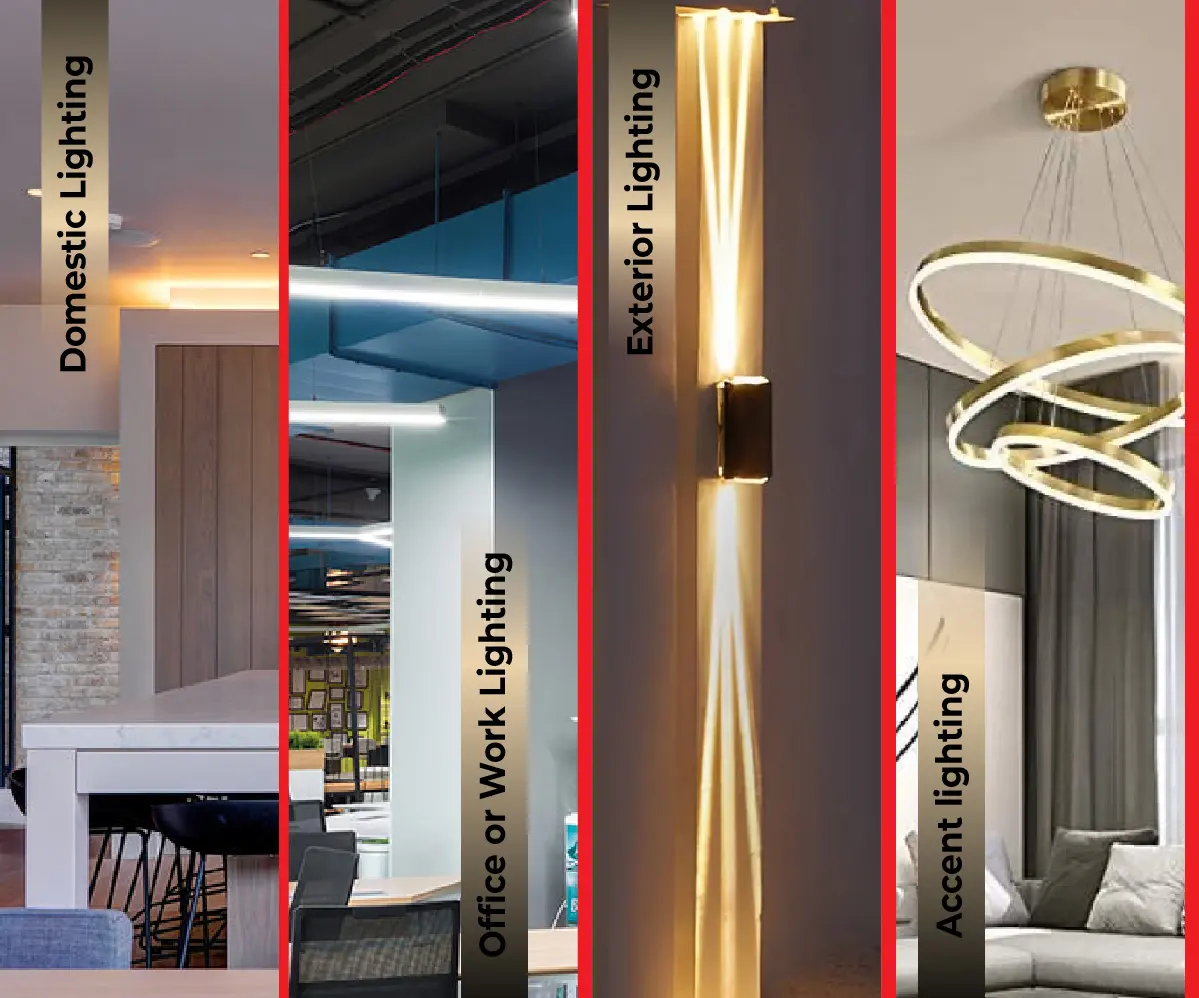LED lights have revolutionized the lighting industry with their efficiency, extended lifespan, and diversity. From replacing household light bulbs to acquiring LED bulbs for outdoor use or picking LED strip lights for decorating, choosing the right LED might be difficult. In this article, we will show you how to choose the best LED lights based on brightness, color temperature, efficiency, and lifespan.
1. Understand Your Lighting Needs
Before purchasing LED lights, determine their use:
- Domestic lighting: Employ warm white or soft white LEDs for cozy lighting.
- Office or work lighting: Daylight or cool white LEDs are suitable for focus and productivity.
- Exterior lighting: Ensure the LEDs are weather-resistant (IP65-rated or higher) for long life.
- Accent lighting: LED strip lights with color and intensity control are best.
2. Consider the Brightness (Lumens, Not Watts)
Unlike incandescent bulbs, which are in watts, LED lights are in lumens (lm) to emit light. Here’s a simple comparison:
- 40W incandescent bulb = 450 lumens LED
- 60W incandescent bulb = 800 lumens LED
- 100W incandescent bulb = 1600 lumens LED
Choose brightness based on the area you must illuminate. Lumens equal lumens equals more light.
3. Choose the Right Color Temperature
LED light comes in different color temperatures, in Kelvin (K):
- Warm White (2700K-3000K): Suitable for bedroom and living room to create a warm ambiance.
- Cool White (4000K-5000K): Suitable for kitchen, bathroom, and office where lighting is needed.
- Daylight (5000K-6500K): Simulates daylight and suitable for garages, offices, and exterior space.
4. Check the Energy Efficiency (Wattage & Lumens Per Watt)
LEDs consume significantly less energy than standard bulbs. Increased efficiency is achieved since the higher lm/W rating means. Purchase dimmable, Energy Star-rated LED bulbs to save as much energy as possible.
5. Opt for Dimmable and Smart LED Models
If you want variable lighting, select dimmable LEDs and ensure they are smart dimmer switch compatible. Wi-Fi or Bluetooth smart LED bulbs support color shifting, dimming, even scheduling lights remotely through a cell phone app, or voice control through Alexa and Google Assistant.
6. Check the LED Lifespan and Warranty
LEDs have a lifespan of 15,000 to 50,000 hours, significantly longer than incandescent light bulbs. Choose good quality products with a warranty of at least 3 to 5 years for longevity.
7. Inspect Fixtures’ Compatibility
Not every LED bulb is compatible with every fixture. Inspect:
- Base type (E26, E27, GU10, MR16, etc.).
- Voltage requirement (especially for low-voltage LED lighting).
- Heat management (do not use enclosed fixtures unless the LED is compatible).
8. Inspect CRI (Color Rendering Index)
CRI rating (Color Rendering Index) is the level of precision with which the light colors. Use LEDs with a CRI of 80 or more for precise color rendition.
9. Weatherproofing Outdoor and Bathroom LEDs
Outdoor use: use:
- IP65-rated LEDs to keep water away.
- Motion-sensor LEDs to lock lights.
- Solar-powered LEDs to conserve energy.
For bathroom LEDs, waterproof them so that they won’t be ruined.
Frequently Asked Questions (FAQs)
1. What LED color temperature should be used at home?
Warm white (2700K-3000K) would be utilized in living rooms and bedrooms to create a warm ambiance, while cool white (4000K-5000K) can be utilized in the kitchen and bathroom.
2. Do LED lights save electricity?
Yes, LED lights use 80% less energy than incandescent bulbs, thereby saving electricity costs.
3. Can I use any fixture with LED bulbs?
Most LED bulbs are compatible with standard fixtures, but check for voltage and base type compatibility.
4. Are LED lights safe to view?
Yes, high CRI and flicker-free LEDs are safe. Dim blue light when used at night.
5. How long do LED lights last?
LED bulbs have a lifespan of 15,000 to 50,000 hours based on the level of use and quality.
Conclusion
Your unique lighting requirements, light intensity, power efficiency, and lifespan will all play a role in your choice of the best LED lights. The best LED light option for home or business use can be purchased based on lumens, color temperature, and watts. To get the most light while saving power and lowering maintenance costs over time, choose high-quality LEDs.

